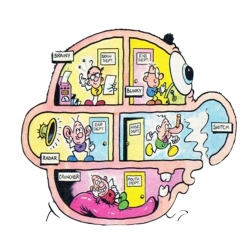To provide the best experiences, we use technologies like cookies to store and/or access device information. Consenting to these technologies will allow us to process data such as browsing behaviour or unique IDs on this site. Not consenting or withdrawing consent, may adversely affect certain features and functions.
The technical storage or access is strictly necessary for the legitimate purpose of enabling the use of a specific service explicitly requested by the subscriber or user, or for the sole purpose of carrying out the transmission of a communication over an electronic communications network.
The technical storage or access is necessary for the legitimate purpose of storing preferences that are not requested by the subscriber or user.
The technical storage or access that is used exclusively for statistical purposes.
The technical storage or access that is used exclusively for anonymous statistical purposes. Without a subpoena, voluntary compliance on the part of your Internet Service Provider, or additional records from a third party, information stored or retrieved for this purpose alone cannot usually be used to identify you.
The technical storage or access is required to create user profiles to send advertising, or to track the user on a website or across several websites for similar marketing purposes.
 The argument about what it takes to encourage people to come into the office more often seems to have boiled down to an equation. It’s now common to hear somebody argue that the office has to be worth the commute it takes to get to it. So, if you want people to spend more time in the building, you need to do the maths. O must be greater than or equal to C (more…)
The argument about what it takes to encourage people to come into the office more often seems to have boiled down to an equation. It’s now common to hear somebody argue that the office has to be worth the commute it takes to get to it. So, if you want people to spend more time in the building, you need to do the maths. O must be greater than or equal to C (more…)



































November 11, 2022
Problems at Twitter, grease proof chairs, and the trouble with AI
by Mark Eltringham • Comment, Flexible working, Technology, Workplace design